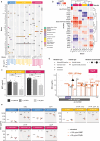Uncovering nitroxoline activity spectrum, mode of action and resistance across Gram-negative bacteria
- PMID: 40263263
- PMCID: PMC12015411
- DOI: 10.1038/s41467-025-58730-5
Uncovering nitroxoline activity spectrum, mode of action and resistance across Gram-negative bacteria
Abstract
Nitroxoline is a bacteriostatic quinoline antibiotic, known to form complexes with metals. Its clinical indications are limited to uncomplicated urinary tract infections, with a susceptibility breakpoint only available for Escherichia coli. Here, we test > 1000 clinical isolates and demonstrate a much broader activity spectrum and species-specific bactericidal activity, including Gram-negative bacteria for which therapeutic options are limited due to multidrug resistance. By combining genetic and proteomic approaches with direct measurement of intracellular metals, we show that nitroxoline acts as a metallophore, inducing copper and zinc intoxication in bacterial cells. The compound displays additional effects on bacterial physiology, including alteration of outer membrane integrity, which underpins nitroxoline's synergies with large-scaffold antibiotics and resensitization of colistin-resistant Enterobacteriaceae in vitro and in vivo. Furthermore, we identify conserved resistance mechanisms across bacterial species, often leading to nitroxoline efflux.
© 2025. The Author(s).
Conflict of interest statement
Competing interests: The authors declare no competing interests.
Figures





References
-
- The European Committee on Antimicrobial Susceptibility Testing. Breakpoint tables for interpretation of MICs and zone diameters. Version 14.0. http://www.eucast.org (2024).
-
- Lambert-Zechovsky, N. et al. Clinical study and effect of nitroxoline on fecal flora in children. Pathol. Biol.35, 669–672 (1987). - PubMed
MeSH terms
Substances
Grants and funding
LinkOut - more resources
Full Text Sources
Medical

